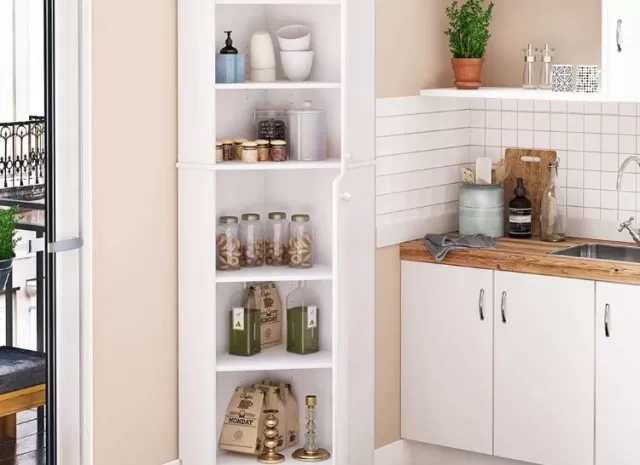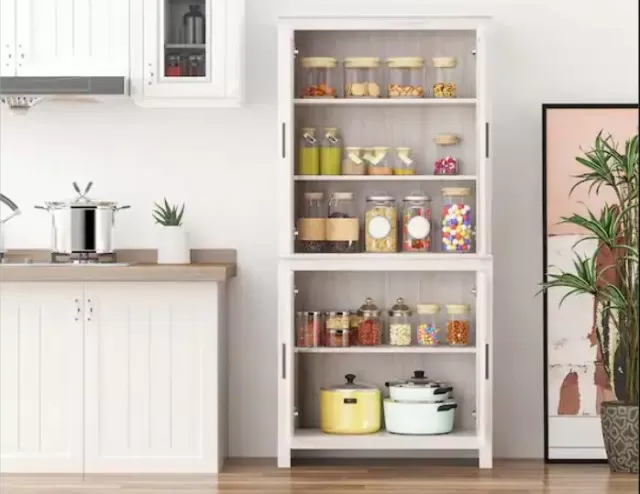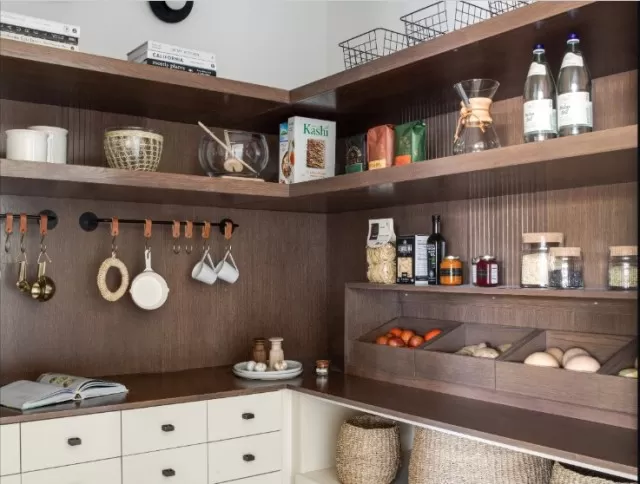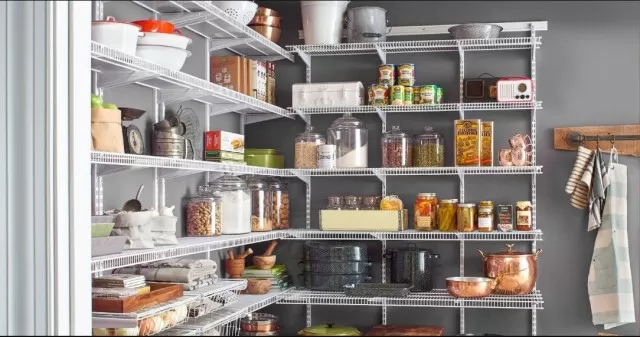Say farewell to messy stacks of cereal boxes and Take control of the clutter with our five-step guide to restore order in your kitchen pantry.
Say farewell to messy stacks of cereal boxes and towering cans in your kitchen.
Take control of the clutter with our five-step guide to restore order in your pantry.
Best Ways to Organize a Kitchen Pantry Most Effectively

Clear it out:
Start fresh by removing everything from the pantry, including shelves and brackets.
Get assistance from your kids in moving all items onto a nearby countertop or table. Give the pantry a thorough cleaning.
Wipe down shelves, walls, and the floor to eliminate dust, cobwebs, and any stray cereal. Consider applying a fresh coat of paint and lining the shelves with paper for a visually appealing look.
Assess other areas in your home where you store food, such as kitchen and laundry cabinets, garage, and basement. Decide if it’s practical to bring more food items into the pantry.
Sort and categorize:
Discard expired or unappetizing items.
Open and unsealed packages, like crackers, cereals, and cookies, should be thrown away if they won’t stay fresh. Get rid of items past their expiration date or those you don’t like or won’t use.
Group the remaining items into categories that make sense for your family. You can separate snacks into “sweet” and “salty” piles or keep all sandwich-making supplies together.
Write down the categories on index cards or sticky notes to stay organized. This will help you stay focused during the process.

Plan and purchase:
Measure your pantry and create a sketch to determine shelf spacing.
Reserve the top shelf for rarely used items and allocate space based on the type of items each shelf will hold. Place garbage and recycling bins on the floor and pour pet food into a lidded canister.
Use a foldable crate for storing bottles of soda or water. Designate specific zones for specialty supplies, such as baking gear, and maximize the space on the pantry doors with additional organizers like a whiteboard, bottle opener, or corkboard.
Organize items within reach of children in low areas, while reserving the midrange for meal-making supplies. .

Utilize storage containers:
Invest in store-bought organizational tools that simplify kitchen pantry management.
Clear plastic bins allow you to stack party supplies or paper goods while keeping them visible. Risers provide stability for cans and enable organized rows by type.
Opt for airtight canisters to repackage dry goods and extend their freshness. Look for containers with square or rectangular shapes, wide mouths for easy pouring and scooping, and stackable lids.
Lazy Susans in different diameters help maximize shelf space and make it effortless to access items at the back. Consider ones with nonslip surfaces or line them yourself with rubber or silicone.
Use them to store bottles and jars, with taller items in the center and shorter ones around them.

Labeling:
Implement labels to maintain the organization of your kitchen pantry.
Use adhesive labels and markers to identify contents in clear containers, including the date. Attach clear pockets to hold cooking instructions.
Hang tags from hooks or loops on solid bins, which can be easily removed or repositioned when the basket’s contents change. Place the tags at eye level for easy identification of items on high shelves.
By following these steps, you can transform your pantry into a well-organized and functional space for your kitchen essentials.
*The information is for reference only.